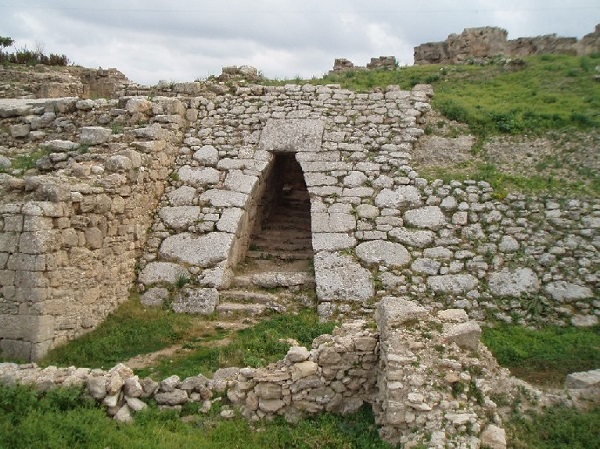Although more than eighty years have already passed on the start of archaeological excavations in Ras Shamra (Ugarit) on the Syrian Coast,discoveries, studies and translations arestill introducing new, wonderful and unique elements expressing the greatness of this city-kingdom which flourished in ancient Syria from pre- historicalages in the seventh millennium BC to the fourth century BC.
Studies implemented during the recent years and researches published in the most renowned specialized reviews,proved that civilizations started in thiscity since the early days of farming and animal domestication on this rocky pine forest. Earlier discoveries showed several flint workshops where typical tools belonging to the end of the Modern Stone Age, i.e. before pottery was manu factured in the seventh Millennium BC.
These tools were flint, diamond shapedpieces: spates, pieces of sickles made of steatite and lime stone. Now it is already proved that settlers of Ugarit plantedwheat, lentil, and Chickpeas, and that they used to collect wild fruits likealmond, fig, pistachio and olive. Manyevidences affirmed that Ugarit’s population raised goats, sheep and cows and hunted dears, swines and buffalos. In the sixth millennium BC farming took a new shape, and new stone buildings of several rooms started to be common in Ugarit. Flint tools became sharper and baked clay was commonly used among Ugaritans. Findings of certain groovedspools proved that the industry of weaving started to form. Animal barrens were found nearby houses with lime stoneculinary in the kitchens. New farming products were produced like barley and new kinds of animals; goats and dogs ,were domesticated.
We discovered that in the modern Stone Age ( where colored clay was known) housing projects were built in the north eastern parts of the site later identified as the Acropolis. In this part of Ugarit houses were built with several rooms and with stone foundations. Constructions above the ground were made of pressed earth blocks supported with wooden beams. Furnaces were found in the corners of houses for individual use, while larger ones were builtin the main squares for collective use. In this period (6000 to 5500 BC) kettles were raised with new aspects of hunting that targeted brown bears, wolves and turtles.In the period from 4500 to 4000 BC architecture developed clearly. Rooms and courtyards were tiled. Circular stone depots were built to store foods, and clay industry improved according to the late Ubaid era. Spear heads were developed with decorations on their faces, daggers and sling shots were used, andcopper was molted for making brooches.Modern archaeological studies proved that Ugarit, in the period from 3000 to 2000BC flourished again when it was resettled after a cessation of more than one thousand year.
The shape of a city kingdom started to take place with a defensive wall surrounding the city. Clay was used at an industrial level in Ugarit as well as in the Orontes Basin and in Palestine. Canaanite sickles and arrow heads discovered from that period were made of obsidian and jade. Metals started to be used for making long arrows and spear heads.
As from 2000 BC new tribes, the Amorites, settled in Ugarit and devised new approaches in metallurgy. The second layer of Ugarit ( first half of the 2ndmillennium BC) revealed cemeteries,tombs and houses. Archaeological excavations showed condensed housingsites, an evidence of collective housingprojects surrounded by a wall whoseparts were discovered in several spots in the site. Many items were brought out including decorated clay, weapons, metallic jewelry, and imported culinary from Cyprus, with other items carved with Egyptian Hieroglyphic writings.
In this period Ugarit had close commercial,economical and political relations with the Egyptians and theMesopotamians. These relations helped develop this city kingdom and expand its area during the Bronze Age 1600 to 1185BC, about which we could collect a wealth of information, particularly about the era from the 14th century to the start of the12th century BC. The collections we could have reflected a variety of civilized, commercial, linguistic and architectural aspects of progress represented in the remains of temples, royal palaces, private houses, cemeteries and texts written indifferent languages: Hittite, Hieroglyphic,Acadian, Ugaritan and Messianic.
The texts discovered in Ugarit caused adeep echo in the world since their translationsenabled us to know a lot aboutthe history of the region in the 12th centuryBC. Here it is worth mentioningthe written Ugaritan language whichwas unprecedented in the world.
Thanks to the boards discovered in theroyal palace and other places we couldknow the details of historical events ofold ages and the relations of Ugarit withother parts of the ancient world: Egypt,Aegean Islands. The Levantine, Cyprus,and Mesopotamia.
Haifaa Mafalani

